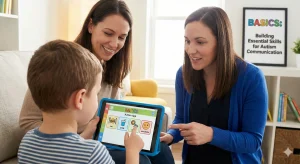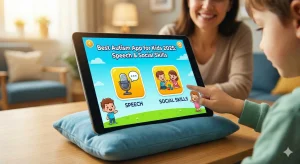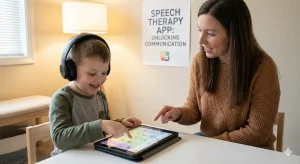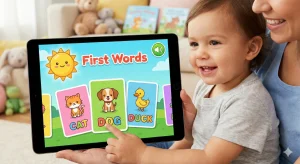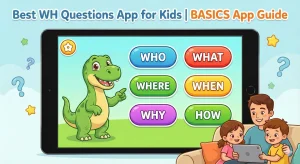How Parents Can Easily Spot Still Face Syndrome: DIY Tips
Last Updated: October 19, 2024
Have you ever noticed your child looking unusually still or unresponsive during playtime? This could be a sign of Still Face Syndrome.
Still Face Syndrome is a condition where a child shows limited emotional responses, often resulting in a lack of facial expressions and minimal interaction with caregivers. While every child has moments of quiet or stillness, Still Face Syndrome can indicate something more significant.
As parents, it’s crucial to recognize the signs of Still Face Syndrome early. Detecting these signs can lead to timely interventions, which can significantly improve your child’s emotional and social development. The earlier you identify the behaviors associated with Still Face Syndrome, the better equipped you will be to support your child and seek help if needed.
What is Still Face Syndrome?
Still Face Syndrome is a condition where a child becomes unresponsive or shows limited emotional expressions, particularly during interactions with caregivers. Imagine a parent trying to engage with their child, but the child reacts with a blank stare or no reaction at all. This lack of emotional response can be concerning, as it may signal underlying issues that could affect the child’s social development.
How Does It Affect Children?
Children with Still Face Syndrome may struggle with emotional and social skills. When a child does not receive appropriate emotional feedback from their caregivers—like smiles, laughter, or comforting gestures—they may have difficulty developing their own emotional expressions. This can lead to challenges in forming relationships, understanding social cues, and even expressing their own feelings as they grow.
For instance, if a child frequently encounters a caregiver’s “still face,” they may start to feel insecure or confused, making it harder for them to connect with others. Over time, this can impact their confidence, behavior, and overall social interactions.
Read More: How Still Face Syndrome Affects Your Child’s Emotional Health
Possible Causes of Still Face Syndrome
One common cause of Still Face Syndrome is unresponsive or emotionally distant caregivers. When a parent or caregiver is unable to respond warmly or engage fully with their child—perhaps due to stress, mental health issues, or other distractions—it can create a disconnect. Children rely heavily on these interactions for their emotional development, so any lack of responsiveness can be particularly detrimental.
In addition, environmental factors such as excessive screen time or stressful home situations may contribute to the likelihood of a child exhibiting signs of Still Face Syndrome. It’s essential to create a supportive environment that fosters emotional exchange, as this can help mitigate the effects of Still Face Syndrome.
Recognizing these signs early can make a significant difference. If you notice a lack of emotional engagement in your child, it’s important to reflect on the caregiving environment and seek ways to improve interactions.
Comparison of Still Face Syndrome and Autism
| Feature | Still Face Syndrome | Autism Spectrum Disorder |
|---|---|---|
| Definition | A temporary condition characterized by limited emotional responses and facial expressions, often seen in infants during interactions. | A lifelong neurodevelopmental condition that affects communication, behavior, and social interaction, typically diagnosed in early childhood. |
| Key Signs | Common signs include a lack of facial expressions, minimal eye contact, and reduced social engagement. These behaviors may be situational and improve with nurturing interactions. | Key signs can include difficulty with verbal and non-verbal communication, challenges in understanding social cues, and restricted or repetitive behaviors. Symptoms can vary widely among individuals. |
| Social Engagement | Children with SFS may show reduced interaction during specific moments, often influenced by caregiver responsiveness. With improved interactions, social engagement can significantly increase. | Individuals with ASD may have varying degrees of social interaction. Some may actively seek social contact while others may avoid it, leading to a wide spectrum of social engagement levels. |
| Duration | SFS can be a temporary issue, often resolved with improved emotional availability from caregivers. Early interventions can lead to significant improvements in emotional responsiveness. | ASD is a lifelong condition, though individuals can develop coping strategies and skills over time with appropriate support and therapies. The severity of symptoms may change as the individual grows. |
| Response to Caregivers | Children with SFS require emotional availability and responsive interactions from caregivers to foster emotional development. Engaging with the child positively can help them express emotions more fully. | Individuals with ASD may benefit from tailored strategies and interventions, including speech therapy and social skills training. Their needs can vary greatly, necessitating personalized approaches for effective support. |
Signs of Still Face Syndrome
Identifying the signs of Still Face Syndrome early is crucial for supporting your child’s emotional and social development. Here are some common signs to look for that may indicate SFS:
1. Lack of Facial Expressions
Children with Still Face Syndrome often display a flat or neutral facial expression, regardless of what’s happening around them. For example, when engaging in a fun activity, such as playing with toys or listening to a funny story, a child might not smile or laugh. Instead, their face remains still and unresponsive. This lack of emotional expression can make it difficult for parents and caregivers to gauge how the child feels in various situations.
2. Limited Eye Contact
Another common sign is a noticeable lack of eye contact. Typically, children seek out eye contact with their parents or caregivers to connect emotionally. However, a child with Still Face Syndrome may avoid looking at others or may look past them, as if they are in their own world. For instance, during a conversation, you might find that your child rarely meets your gaze or looks away instead of engaging.
3. Reduced Social Interaction
Children exhibiting signs of Still Face Syndrome may also withdraw from social interactions. They might show little interest in playing with peers or engaging in group activities. For example, at a playdate, instead of joining in on games or responding to others, they may sit quietly, seemingly uninterested. This withdrawal can be concerning as it may lead to difficulties in forming friendships and understanding social cues.
Also read: How Modern Lifestyles Lead to Still Face Syndrome in Kids
Examples of These Behaviors
- During Playtime: If your child is playing with blocks but doesn’t react when you cheer them on or express excitement about their creations, this could be a sign of reduced emotional engagement.
- In Social Settings: At a family gathering, if your child sits quietly in a corner instead of mingling with relatives or playing with cousins, this lack of social interaction may indicate underlying issues related to SFS.
- While Reading Together: If you read a story with your child and they don’t respond to exciting moments or funny characters with laughter or smiles, this lack of reaction is worth noting.
DIY Tips for Parents
As a parent, you play a vital role in supporting your child’s emotional development, especially when it comes to recognizing and addressing Still Face Syndrome . Here are some practical DIY tips to help you observe your child’s interactions and encourage emotional expression.
1. Watch and Observe
The first step in identifying signs of Still Face Syndrome is to watch and observe your child closely. Pay attention to how they interact during playtime, meals, or family gatherings. Look for moments when your child engages with others—do they smile, laugh, or show excitement?
One effective way to track these interactions is by keeping a simple diary. Write down your observations, noting any instances of emotional expression or lack thereof. For example, if your child plays with toys but doesn’t react when you cheer them on, make a note of it. This can help you spot patterns over time and provide valuable insights if you need to discuss your concerns with a healthcare professional.
2. Engaging Activities
In addition to observation, engaging activities can significantly help your child express their emotions. Here are some fun ideas to try:
- Making Funny Faces: Sit in front of a mirror with your child and take turns making silly faces. This not only encourages laughter but also helps your child explore different facial expressions. You can ask them to mimic your expressions, which promotes interaction and emotional engagement.
- Playing Mirror Games: This classic game involves one person acting as a “mirror” to the other. You can start with simple movements or expressions and see if your child can imitate you. This activity encourages them to focus on your facial cues and respond accordingly, fostering a deeper emotional connection.
- Story Time with Emotion: When reading together, pause and ask your child how they think the characters feel. Encourage them to use their faces to show those emotions. For instance, if a character is happy, encourage your child to smile, and if the character is sad, they can frown. This helps your child practice recognizing and expressing emotions.
Read More: Simple DIY Engagement Activities to Combat Still Face Syndrome
Tips for Parents
Creating a supportive environment for your child is essential, especially when it comes to recognizing and addressing Still Face Syndrome. Here are some practical tips to help you foster emotional growth and know when to seek professional guidance.
1. Create a Supportive Environment
One of the most important aspects of nurturing your child’s emotional well-being is being emotionally available and responsive. This means actively engaging with your child and responding to their needs in a timely and loving manner. Here are some tips to create a warm and loving home:
- Be Present: Spend quality time with your child without distractions. Put down your phone and focus on them during playtime or mealtime. This shows your child that they are valued and encourages them to express their feelings openly.
- Encourage Open Communication: Make it a habit to ask your child how they feel and encourage them to share their thoughts. Use simple questions like, “What made you happy today?” or “Is there something bothering you?” This creates a safe space for them to express their emotions.
- Respond with Empathy: When your child shares their feelings, acknowledge them. Use phrases like, “I understand that you feel sad” or “It’s okay to be upset.” This validation helps your child feel understood and supported, which is crucial for their emotional development.
- Model Emotional Expression: Show your child how to express emotions healthily. Share your feelings and demonstrate appropriate responses to various situations. For example, if you’re feeling happy, express it through smiles and laughter, and explain why.
Read More: Top 5 Parenting Tips to Prevent Still Face Syndrome
When to Seek Help
While fostering a supportive environment is essential, there may be times when you notice signs of Still Face Syndrome that require professional assistance. Here’s when you should consider talking to a doctor or therapist:
- Persistent Signs: If you consistently observe signs of SFS—such as a lack of facial expressions, limited eye contact, or reduced social interaction—over several weeks, it may be time to seek help. Early intervention can make a significant difference.
- Difficulty Connecting: If your child struggles to engage with family members or peers, and this behavior persists despite your efforts to encourage interaction, consulting a professional can provide valuable insights and support.
- Emotional Distress: If you notice that your child appears distressed, anxious, or withdrawn, it’s crucial to address these feelings. A mental health professional can help assess your child’s emotional state and provide appropriate guidance.
- Parenting Concerns: If you feel overwhelmed or unsure about how to support your child, reaching out to a therapist can also help. They can provide strategies tailored to your family’s unique needs.
Conclusion
Spotting Still Face Syndrome early is crucial for your child’s emotional and social development. Signs such as lack of facial expressions, limited eye contact, and reduced social interaction are key indicators. Early intervention can significantly improve your child’s ability to connect with others and express emotions, which builds healthy relationships and self-esteem. Trust your instincts—if these signs persist, seek professional help. Platforms like Wellness Hub offer valuable resources and expert guidance tailored to your child’s needs. Being proactive can make all the difference in supporting your child’s emotional growth and overall well-being.
Frequently Asked Questions:
1. What is Still Face Syndrome?
Still Face Syndrome is a condition where a child shows limited emotional responses, such as a lack of facial expressions and reduced social interaction. It can affect a child’s emotional development and ability to connect with others.
2. What are the signs of Still Face Syndrome?
Common signs of SFS include:
- Lack of facial expressions
- Limited eye contact
- Reduced social interaction with peers and caregivers
3. How can I spot Still Face Syndrome in my child?
To spot SFS, observe your child during playtime and daily activities. Look for signs like flat facial expressions, difficulty making eye contact, and a lack of interest in social interactions. Keeping a diary to track these behaviors can also be helpful.
4. What can I do to help my child with Still Face Syndrome?
Create a supportive environment by being emotionally available and engaging in activities that encourage emotional expression. Simple games like making funny faces or playing mirror games can help promote interaction and connection.
5. When should I seek help for my child’s emotional behavior?
If you notice persistent signs of SFS or if your child struggles to connect with others, it’s important to consult a healthcare professional. Early intervention can lead to better emotional and social development for your child.
6. Can Still Face Syndrome affect my child’s future relationships?
Yes, if left unaddressed, SFS can impact your child’s ability to form healthy relationships and understand social cues as they grow older. Early identification and intervention are crucial for positive outcomes.
7. Where can I find more resources about Still Face Syndrome?
For more information and resources on Still Face Syndrome, visit Wellness Hub. We offer various articles and guides to help parents support their children’s emotional development.
8. What causes Still Face Syndrome in children?
Still Face Syndrome can be caused by unresponsive or emotionally distant caregivers. When caregivers are unable to provide emotional feedback during interactions, it can lead to a child’s reduced emotional expression and social engagement. Environmental factors, such as excessive screen time or stressful home situations, may also contribute.
9. Is Still Face Syndrome the same as autism?
No, Still Face Syndrome is not the same as autism. While both conditions can involve social and emotional challenges, SFS specifically refers to a lack of emotional responsiveness in interactions. Autism Spectrum Disorder (ASD) is a broader neurodevelopmental condition that affects communication, behavior, and social skills. However, early signs of SFS may sometimes be observed in children on the autism spectrum.
10. How can I support my child’s emotional development at home?
You can support your child’s emotional development by creating a warm and loving environment. Spend quality time together, encourage open communication about feelings, and model emotional expressions. Engaging in interactive activities, such as playing games that promote emotional recognition, can also help. Regularly checking in on your child’s emotional state will foster a supportive atmosphere for growth.
About Author:
Lasya Vooturi,
Clinical Psychologist (A) & Behavioral Therapist
Lasya holds a Professional Diploma in Clinical Psychology from Amity University, where she deepened her understanding of psychological principles from March 2023 to March 2024. With over a year of dedicated experience as a Behavioral Therapist, Lasya has honed her skills in applying effective therapy techniques tailored to individual needs. Fluent in Telugu, Hindi, and English, she is adept at connecting with a diverse range of clients, ensuring comprehensive communication and understanding. Lasya’s approach is grounded in empathy and scientific rigor, making her a trusted ally in navigating mental health challenges.
Book your Free Consultation Today
Parent/Caregiver Info:
Client’s Details:
* Error Message

